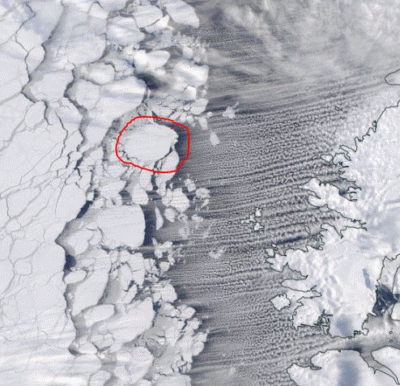Environment & Energy
Related: About this forumFor Jan-Mar 2016, Arctic 4.5C Above 20th Century Baseline Temperature Average
EDIT
But the Earth, as of this Earth Day, hasn’t warmed evenly. A far, far greater portion of that excess heat has stooped over the Arctic. During the first three months of 2016, the Arctic region above 66 degrees North Latitude has been fully 4.5 C hotter than the NASA 20th Century baseline. That’s a departure more than three times that of the rest of the Earth. And that’s bad news for anyone concerned about sea ice, or polar bears, or Arctic carbon feedbacks, or predictable seasons, or extreme droughts and floods, or the Jet Stream, or Greenland melt, or sea level rise, or … well, you get the picture.
One region, at the boundary between the Arctic Ocean and the Greenland Sea near Svalbard, has been particularly warm. So warm, in fact, that sea surfaces now devour slabs of Arctic Ocean ice blown into it by winds running out of the Arctic in a matter of days. It takes a lot of ocean warmth to have this kind of effect on sea ice. A particularly ferocious amount of heat for the ocean to exhibit so early on in the melt season.
 ?w=600
?w=600
(Neven posted this excellent blog tracking a ferocious amount of heat in the region of the Greenland and Barents Sea. Arctic Sea Ice Forum commenter Andreas T provided this graphical representation of sea ice disintegration as it was blown into waters just to the north of Svalbard earlier this week.)
Perhaps the easiest way to illustrate how relatively hot the Arctic is now is the fact that sea ice in the region is melting fast. So fast that current extent measures by JAXA are at their lowest levels on record. It’s a precipitous rate of melt that’s about one week ahead of any of the previous fastest melt season. Or you could just look at the number of Arctic freezing degree days recorded at CIRES and find one more measure added to NASA or record low sea ice pointing toward the obvious fact that this year, for the Arctic, has been one of just absolutely ludicrous warmth.
As Winter progresses into Spring, temperatures typically moderate — closing in on baseline averages. And this year has been no exception. However, readings for the entire Arctic have tended to range between 1.5 and 2.5 C above average over the past two weeks. These are some seriously hot departures for Spring. Enough to keep Arctic heat in record ranges for 2016.
EDIT
https://robertscribbler.com/2016/04/22/record-global-heat-huge-springtime-arctic-warm-up-to-crush-sea-ice-drive-extreme-jet-stream-dip-into-europe/
Gregorian
(23,867 posts)It's ironic that despite knowing what's going on, people are still partying like there's no tomorrow. And they've all got children. If I had children I'd be destroyed knowing what they are about to live through.
I guess a car centric society with cheap energy makes it very easy for people to be irresponsible. In fact, our fake media encourages it.
It's like someone says your child has a 103F fever, and you ignore it.